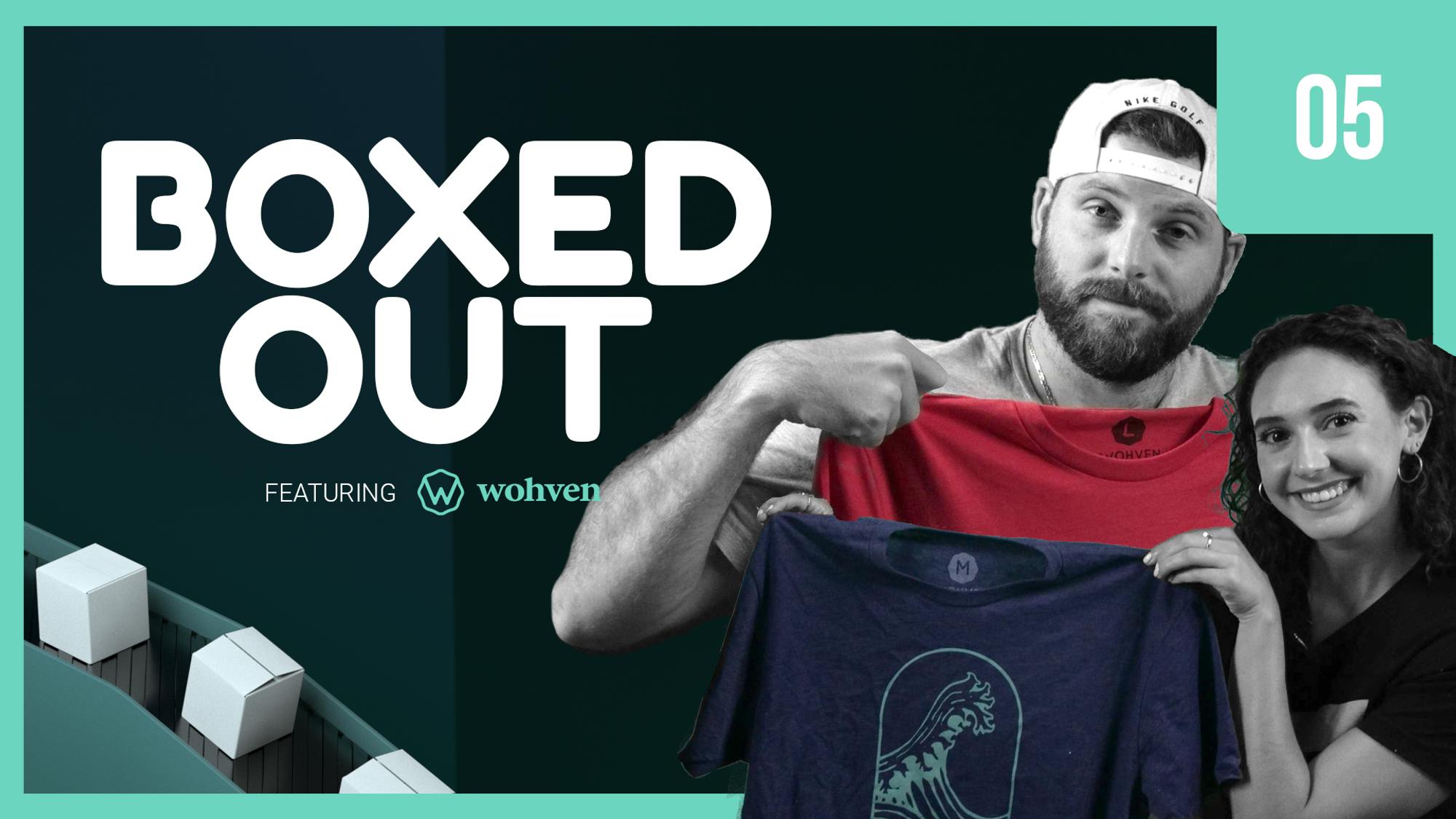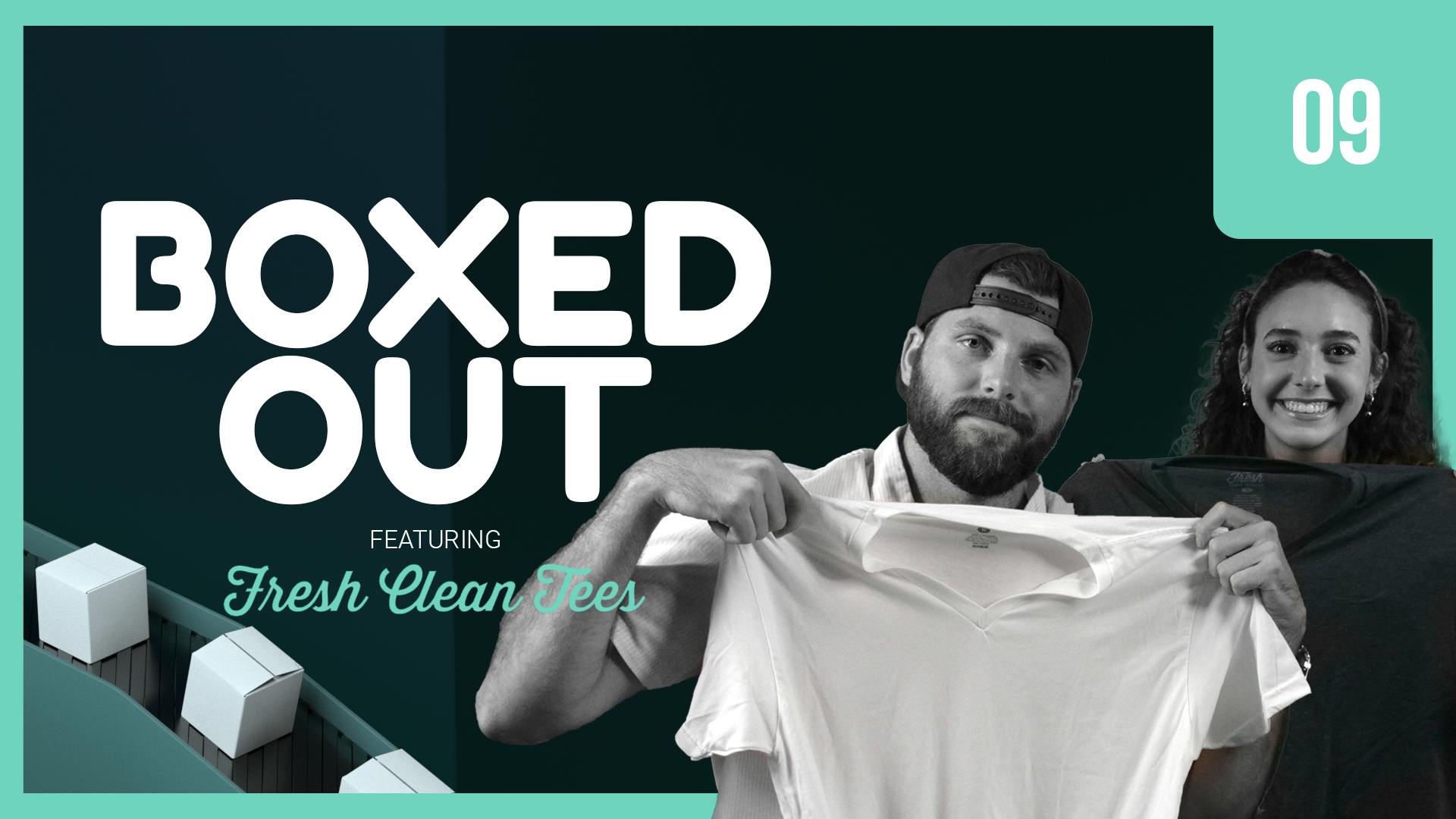
Bespoke Post: Does it have the retention goods?
This episode might reference ProfitWell and ProfitWell Recur, which following the acquisition by Paddle is now Paddle Studios. Some information may be out of date.
Please message us at studios@paddle.com if you have any questions or comments!
Today we're talking about Bespoke Post, a company that's making noise in the world of subscription boxes. We're going to learn how Bespoke Post is succeeding by partnering with under-the-radar brands and providing unique and hard-to-find items. Then, we're going to jump into what Bespoke Post is doing great — and not so great — with its subscription retention strategy, wrapping this all up into a nice case study for improvements for your own brand.
Its commitment to support small businesses and listen to its customers has made Bespoke Post one of the top subscriptions of goods & guidance out there. Today it delivers to almost half a million customers in the US and Canada. But, can they keep them long-term?
Key takeaways:
- Customization increases retention
Customization is key, particularly when you offer a lot of add-ons. Consider where you learn most about your customer. In Bespoke's case they have so many options, a quiz is necessary. But even just including a question or two for your brand can go a long way into getting buy-in.
Keep in mind that customization has a significant impact on retention. We found that curated, customization paths tend to correlate to customers with 10%-15% higher retention rates than those who go down a non-curated path. - Cancellation flows reduce churn
You must keep in mind that not all customers who cancel are lost. There’s a whole list of reasons that have nothing to do with your company. So it’s crucial that you offer a smooth offboarding process with a one- to two-question survey on why they’re leaving that leads to a salvage offer or pause plan. It’s enough friction to help reduce some churn and increase the long-term possibility of reactivation.We’ve found that companies that properly offer up salvage offers and have a clear offboarding experience tend to save 15%-30% of cancellations. - Credit card failure process needs attention
When a credit card fails or declines, it is absolutely crucial to include an intelligent email drip campaign based on the customer's behavior. Include the following:
Four to five plain-text emails (these aren’t sent when a credit card goes back on file).
SMS messages in the flow
Liven up the credit card form to properly capture the customer back in a more secure, branded, and pleasing way.
Bespoke Post
The subscription box industry has exploded, especially in the last decade. But did you know that the Book of the Month Club was actually the first subscription box, dating all the way back to 1926? Harry Scherman, a journalist and marketing pro wanting to break into the rural book market, came up with the idea to charge a monthly fee for books rather than depend on people to order their own, which ensured repeat purchases on a regular basis. He would send members a different book every month while also providing an option to cancel or skip the month. This was essentially the genesis of the fundamental subscription model we all know and love today.
We love it so much, in fact, that the global subscription box market totaled $18.8 billion in 2020, with 55% of all subscribers holding curated subscriptions. So, it’s pretty clear that customization and personalization is something consumers are willing to spend money on. Additionally, 60% of all subscribers are women, but men hold a higher number of active subscriptions.
The convenience of curated subscription boxes has gained the interest of more and more men. Ten years ago, however, the options for men were limited. Bespoke Post set out to change that, creating an all-under-one-roof platform that endeavors to meet the shopping and gifting needs of the modern man.
Bespoke Post was founded in 2011 by Rishi Prabhu and Steven Szaronos. The two co-founders were friends and classmates in business school. They had joined the Entrepreneurs Roundtable Accelerator Program, a leading technology accelerator and early-stage venture capital fund, and saw a business opportunity in the ecommerce space focused on a subscription service for men.
They recognized that there weren’t many ecommerce businesses built for men’s interests and needs. So, Rishi and Steven came up with Bespoke Post to assist the modern man in enjoying and discovering interesting and new items. They launched the site just 30 days after the idea originated and haven’t stopped building it since.
Bespoke Post's success
Bespoke Post owes its success to two factors: its business model and the flexibility it offers subscribers.
Bespoke Post’s business model incorporates a commitment to support small businesses. Ninety percent of the products it offers come from small businesses. It partners with under-the-radar brands to provide unique and interesting items. These are the kind of items that you’re not likely to find in most stores or on Amazon, which creates even more exclusivity. Ultimately, it’s these supplier relationships that have helped make Bespoke Post one of the most discoverable sites in its industry.
The second factor for the brand’s success is flexibility. With a 40% cancellation rate across the subscription box industry as a whole, Bespoke understands that giving customers the flexibility to not only skip or cancel, but to also change their minds and order something entirely different is crucial to keeping them around.
Bespoke Post offers a vast variety of products. You can order anything, including geeky memorabilia, razors, clothing, shoe-shine kits, home-bar essentials, and shaving sets. Box themes range from travel and mixology to cigars and tobacco with a whole range of products in between.
Each month, customers receive a themed box that Bespoke has curated for them. The selection is based on data collected during the sign-up process and tailored to match preferences. However, customers are able to preview the selected box before it ships, which allows them to tweak sizes and colors, add more items, skip, or exchange boxes for different ones all at no extra charge. Furthermore, you’ll enjoy free shipping and easy returns in case of an issue. Although the cost of the box is $45, the items inside have a retail value of no less than $70.
Bespoke Post is now the top men's ecommerce service and lifestyle subscription that delivers goods and guidance to almost half a million customers in the US and Canada. Women are also increasingly beginning to make up a portion of those customers as the company expands its offerings.
With the market continuing to grow and Bespoke Post keenly listening to its customers, this brand likely isn’t going anywhere but up.
Retention Review
Not everything's amazing about Bespoke’s strategy, but there’s still a lot to learn from it. It does a great job of appealing to the niche part of its market and expanding it steadily. That being said, we need to remember: retention is key and an area where most brands mess up.
Why is retention important?
You spend half of your budget and time acquiring customers, but to be successful, you need to keep them. The beauty of the subscription model is that the relationship with the customer is baked directly into how you make money. If that customer is happy, they'll keep buying from you in the long term. If they're upset or not seeing the value, they'll cancel—quickly.
Plus, money talks here. Subscription ecommerce companies using the tactics we're going to talk about have 2x the customer lifetime value (LTV), 2x the average order value, and 3x higher growth rates, because they're not worried about plugging a leaky retention bucket.
To highlight the importance here, let's look through Bespoke Post's retention strategy and break down what they're doing well, and not so well, so you can learn for your own DTC business.
Retention has three parts:
- Active churn, which are customers who are actively choosing to cancel your product.
- Expansion revenue, which are your existing customers that buy more product.
- Delinquent (or involuntary) churn, which are customers who's credit card or payment has failed, which sadly is one of the largest single buckets of where you're losing money.
Active Churn
When we look at Bespoke Post's active churn, there are so many reasons why a customer may cancel — some you can control, others you can't. We want to make sure Ritual is not only setting up their customers for long-term retention in the initial purchasing process, but that they're also collecting information on why someone's cancelling, if they so happen to, in order to get a clean cycle of retention improvement.
Bespoke Post has a great branding and onboarding strategy. With memberships that require so much curation, Bespoke Post does a good job of putting everything together to make sure the surprise box I get each month is appealing. They have me choose a quiz and fill out questions to really tailor the experience to my specific preferences. The customization also locks me in more when I get items that I feel good about. After the quiz, I get dropped right into a box preview, which allows me to make changes before shipping. So even though they’re doing all that great curation,, in the end, I’m still “in control” and can continue to customize the box even more. This keeps a cool variety of stuff that I’ve specifically chosen coming to my door, and it keeps me subscribed.
We often don’t appreciate the impact customization can have on retention. We found that customization paths like this tend to correlate to customers with 10%-15% higher retention rates than those who go down a non-curated path. This is according to a study we did on 30,000subscription ecommerce customers.
For your brand, make sure to reconsider where you learn most about your customer. Bespoke Post has a curation problem mainly because it has so many different options to send customers that a quiz is necessary. Even just including a question or two for your brand can go a long way into getting buy-in, but it’s also important to make sure that you nurture your customers into sticking around longer.
On the not so great side, Bespoke Post’s offboarding and cancellation flow was awful. There is absolutely no way to cancel through your account or on the site, and you don’t have an option to use chat to cancel. You pretty much have to call or send a text. Admittedly once you sent the text, things went smoothly. One downside, though, was that the support person didn’t try and save us. This overall friction actually backfires quite a bit because companies with this type of off-boarding tend to have very poor reactivation rates, even if their short term cancellation rate is a bit lower. It needs to implement a better process on the site, starting with questions that ask why I’m canceling and incentives to get me to stay.
Remember, sometimes cancellations are about timing. You should add a little bit of friction with an off-boarding flow that asks why someone’s canceling to learn from that data and then offer them different options to stick around or pause their subscription. They may still leave, but because of the good experience, more of these customers will come back than if you give them a bad experience.
The data supports this notion because we see customers who leave with a bad taste in their mouth rarely come back. Cancellation flows done well can actually do wonders. In a study of over 1000 subscription ecommerce companies, we found that those with proper offboarding and salvage offers were actually able to save 15%-30% of customers and not hurt their reactivation rates.
Expansion Revenue
Expansion revenue is crucial, because your existing customers are more than willing to buy 3x more from you—you just have to make sure to ask. Plus, those customers who have at least one add-on or additional purchase tend to have 18-54% higher lifetime value, meaning they're paying you more over the life of the subscription, but they're also sticking around longer, because they're more ingrained within your product.
Bespoke Post’s expansion revenue strategy is actually really good. First, I absolutely love the additional products section. When I’m reviewing my box, I can easily add other items to my cart with the click of a button. The fact that they’re complementary to my purchase is great too because I’m already about to make my main purchase, so adding another quick click on an item is super easy.
The other thing that I love is the club member perks. There are a ton of other cool products available with the club member perks so offering up a bit of that exclusivity makes the offer that much more appealing. The variety of products is great. Bespoke is like the modern day Sharper Image.
Bespoke keeps this train going through its provisions subscription. We saw this earlier this season with the wine subscription offered by Blue Apron. Pushing another product subscription is a great idea, and something as complementary to the brand as provisions seems like a no brainer. We really like this addition.
If we take a step back, notice how all of these expansion revenue offerings are curated and strategically positioned around your purchasing habits and flow. The result is you don’t feel overwhelmed, but you also feel like there’s much more to discover.
For your brand, the secret is to take a step back and make sure you have a clear expansion revenue and add-on strategy. Some of these ideas will come as natural extensions of your existing products, but others will take some thought. Remember you’re trying to offer customers that already love you more to buy.
Credit Card Failures
Now let's talk about the sexiest topic in the world—credit card failures. We know you don't wake up sweating in the middle of the night thinking about credit cards—that's our job—but here's why we obsess over things like this: just under 40% of the customers that leave you are leaving you because of failed payments. To get these folks back, we want to make sure Bespoke Post is treating these folks like a marketing channel, sending them messages before the point of failures, all the way to after the point of failure through email and text messages.
This is where Bespoke Post needs the most improvement. One clever thing the brand does here that you don’t see that often is it doesn’t let you sign up with prepaid debit cards. It is definitely sacrificing customers here, but it’s also ensuring less failures since these cards fail at a much higher rate.
One thing to keep in mind though is that I think the only reason to implement this is if you have a lot of fraud coming through your credit card forms. Theoretically, this shouldn’t impact Bespoke Post’s sending of products because it won’t send something until it’s paid for. I’d only do this if it was becoming almost like an attack on the system.
You normally don’t see this until a brand is so large that it becomes a giant target for fraud. For most of you watching, we would not recommend this as a viable credit-card failure reduction strategy because your email game should be tight.
Speaking of email strategy, Grove really needs to update its game here. For a brand as big as Bespoke Post, it should be focusing more on its payment failure emails. The email copy itself was okay, but it would benefit a lot more from being plain text and coming from a person. It needs 4-5 of these plain-text emails to go out in an intelligent drip sequence after cards are declined. It needs SMS messages that alert customers to expired credit cards. It also needs to allow users to update payment information without logging in.
Overall:
Overall, Bespoke Post’s doing probably about average compared to what we see from other subscription ecommerce brands. There are some highlights there, but also some lowlights. If it wants to take on the multibillion dollar industry it’s in and win, though, there are some key changes that need to be made.
Let's revamp. First though, why do we feel we have any authority to even talk about this? Roughly 20% of the entire subscription market is using ProfitWell, so we're sitting on more data than anyone else. Simply put, we have the data to know what works and what doesn't, and we care more about this problem than anyone else out there.
Let's walk through what we'd steal and what we'd change immediately about Bespoke Post's retention strategy, so we can all learn for our own brands.
Steal it:
Solid add-on strategies
We already gushed about it already, but its entire expansion revenue strategy is fantastic. It’s well thought out and worth stealing. Within its flows, it has recurring add-ons and one-time add-ons that are never presented in a burdensome manner. Its additional offerings always naturally fit into the flow of signing up or managing your account.
The big takeaway for your brand is to take a step back and actually have an expansion strategy. Some of these add-ons will come from just natural next-step thoughts. Others will come from taking that step back and planning accordingly.
Change it:
Include smooth offboarding and salvage offers
In terms of what we'd change, the big piece is going to be that cancellation flow. Right now, Bespoke Post is forcing you to contact support, and I have a feeling it's because it’s offering a short-term reduction in cancellations. The issue is we know that this type of offboarding actually decreases long-term lifetime value because these customers don’t come back as often when it comes to reactivations.
Not all customers who cancel are lost. Sometimes it’s timing or a vacation or a whole list of things that have nothing to do with you. Instead, offer up a smooth offboarding experience with a 1-2 question survey on why they’re leaving that leads to a salvage offer or pause plan. It’s not a ton of friction, but it’ll reduce some churn and not hurt the long term possibility of reactivation.
We’ve found that those companies that properly offer salvage offers and a clear off-boarding experience tend to save 15%-30% of cancellations. This is based on a study we completed looking at just over 1,000 subscription ecommerce companies. Plus, there tends to be less terrible reviews and social media posts from angry customers.
Upscale credit card failure process
Bespoke Post needs to upscale its credit card failure process. It isn’t a small brand anymore and should stop acting like one with its current process because it’s losing a lot of money by doing the bare minimum. It needs 4-5 plain-text emails that go out in an intelligent drip sequence based on the customer’s behavior after the card is declined. Obviously, these emails would stop once a credit card gets put back on file. It needs SMS messages included in this flow, and it also needs to liven up the credit-card form a bit to better capture the user back.
Who's up next?
Next week, we're taking on the world of the outdoors, cooking, and clothing with Ancient Nutrition from Dr. Axe. Ancient Nutrition has become incredibly popular recently by bringing a huge selection of healthy vitamins and supplements straight to your door. Next week, we’re going to see how its retention strategy is performing.






